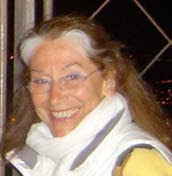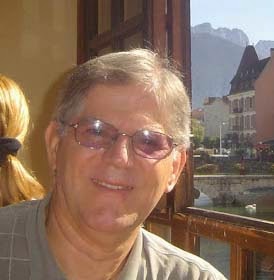by Tom Kando
Today, I am posting the first part of my review of The Killing Compartments; The Mentality of Mass Murder (Yale University Press, 2015), a new book by Abram De Swaan, Professor Emeritus of Social Science, University of Amsterdam. (Page numbers referenced are for the e-version of the book). It is a long review, so it’s broken up into five parts. I hope you read it all.
Abstract:
The book under review offers a profound analysis of the phenomenon of Mass Extermination. There are four types: The Conqueror’s Frenzy, Rule by Terror, the Loser’s Triumph and the Megapogrom. De Swaan provides rich and vivid case studies from past and current history. The author refutes the fundamental fallacy of situationism, which suggests that we are all potential mass murderers.
He does this with a four-level analysis, the levels of macro-sociology, meso-sociology, micro-sociology and psycho-sociology. Human societies go through both the civilizing process AND the de-civilizing process - regression towards barbarism. I conclude with some speculation about the future of our species and its potential for survival as well as for self-destruction.
1. Introduction
2. Taxonomies, Terminology, classifications
3. How is Mass Annihilation Accomplished?
4. Are we All Potential Mass Murderers?
5. Conclusion: Towards Armageddon for the Human Species, or the Golden Age?
1. Introduction:
I just read Abram De Swaan’s new book, The Killing Compartments: The Mentality of Mass Murder (Yale University Press, 2015). I won’t beat around the bush: This book is a veritable Tour de Force. De Swaan handles the topic, which is as central to our times as it is depressing, with dexterity. By this I mean that De Swaan is simultaneously the detached social scientist AND the moralist. His erudition and analysis represent the best that scholarship can offer, and at the same time the book exudes a moral outrage that is totally appropriate in the face of humanity’s scandalous historical record of violence. A perfect blend of reason and emotion.
But enough compliments already. What is the book specifically about?
It is about the horror of mass, violent annihilation of vast numbers of human beings by their fellow humans beings. It provides a complex and highly plausible theoretical framework, and it offers an enormous amount of historical information.
The following quote/paraphrase will give the reader a flavor of this gripping book. It is compiled from the sub-section titled " Mass Annihilation in History”:
Examples of the mass slaughter of defeated or subjected people by onrushing conquerors or established rulers are countless. They include the Trojan War, the practices of ancient Rome and other regimes during Antiquity, biblical tales of carnage, endless bloodshed throughout the Dark Ages and the Middle Ages, and the massive cases of genocide and mass annihilation in the Modern Age, all the way to the present: “Once the enemy has been defeated, the vanquished opponents (are) often killed in great numbers and the local population (is) robbed, expelled, or slaughtered, after the women (have) been raped....The victims (are) literally innumerable. (In the past,) the killers prided themselves in their deeds, and the chroniclers honored them by vastly inflating the number of victims...The European conquest of the Americas ushered a new era, also in mass extermination....One of the most lethal instances of mass extermination in modern times...(was) the (Chinese) Taiping Rebellion...from 1850 to 1864, (which) cost...at least) twenty million lives (with some estimates going up to one hundred million)....Throughout....history the more blood the victors shed, the greater their glory. Only in the past few centuries do the murderers prefer to pass over the bloodshed silently or to minimize the numbers....(However, with the emergence of the modern state), administrative capacity, logistical resources, military technology and propaganda have enormously increased the...potential for genocidal campaigns. States are the greatest killers of human beings in the modern world.”(77-86).
In today’s post-modern world, reality and perception have merged to create an atmosphere in which no concern is more prominent than concern about violence. Marshall McLuhan’s prediction has come to pass. The message presented by the medium no longer distinguishes between myth and reality. Regardless of their frequency, terrorism, crime, war and other forms of violence have become THE uppermost topic. This has been achieved by the mass media, the internet, the social media, electronic technology, and popular culture.
Thus, many of us now ruminate about humanity’s prospects. Is there hope? Are “things getting better,” worse, or neither? Are “civilization,” “modernity” and “progress” still synonymous , and still IN EFFECT?
In 2011, Steven Pinker wrote “The Better Angels of Our Nature,” where he argues that violence in the world has declined, both in the short term and in the long run. (For an excellent review of this book, see Madeleine Kando).
De Swaan does not directly address this issue. Even though the book’s very first words are: “These are peaceful times,” it is not his purpose to speculate as to whether the world has become more violent or less violent, or to try to reconcile his narrative with Pinker (although he does recognize Pinker, Chapter 6, footnote 3, p. 282).
He does something more interesting: He examines (and refutes) the thesis - here associated with the Polish sociologist Zygmunt Bauman (see Modernity and the Holocaust) - that modernity is responsible for increased mass annihilation in the 20th century (39-46). Of course, the more general theme that “modernity increases human violence and destruction” has been around for a long time, becoming even part of popular culture, as an antidote to those who blindly pray at the altar of technology. Ever since the dawn of the nuclear age, humanity has been aware of the possibility of nuclear species suicide. Additionally (and this is Bauman’s theme), it is said that the core features of modernity, such as detached rationality, advanced science and technology, and the modern state and the modern bureaucracy, enhance the scope of violence. According to Bauman, the Holocaust is the prototype of the “rationalization of murderous destruction.” This view, then, is the opposite of the traditional belief that modernity goes hand in hand with progress and the civilizing process.
However, De Swaan doesn’t buy it: As we shall see, he argues convincingly that the Holocaust (and other similar cases of mass annihilation such as the Soviet terror) require more complex socio-psychological explanations than Bauman and other anti-modernists provide.
Similarly, De Swaan examines and rejects Michael Mann’s thesis in “The Dark Side of Democracy,” where the author of that book writes that “Murderous (ethnic) cleansing is modern, because it is the dark side of democracy.” (44).
Furthermore, De Swaan is significantly influenced by Norbert Elias and that sociologist’s work, The
Civilizing Process. (see for example, 10, 65 and 125). Elias’ central preoccupation was the civilizing process which presumably affects society as it becomes more modern. However, both Elias and De Swaan also recognize the possibility of DE-civilization, or UN-civilization. I shall return to this question.
As to whether there is now less (mass) violence than in the past (Pinker) or more, it is possible that mass murder has increased at the aggregate level simply because the world’s population has grown so enormously, but that proportionally, the numbers may be down. Who knows. Whatever the answer is, the phenomenon has existed as long as men have been around, and it does not seem to have abated very much in the 20th and 21st centuries.
(To be continued)
leave comment here
© Tom Kando 2015
Youtube
Contact Form
Popular Posts
-
By Madeleine Kando Flying is like signing away your rights as a human being. Not only is your life put on hold, but you never know which sid...
-
By Tom Kando Only one thing aggravates me more than the mistakes of the electorate - as exemplified by the Democratic loss in Massachusett...
-
by Madeleine Kando We left Boston early Sunday morning, the day before the 2024 Solar Eclipse. We have friends who live close to the Canadia...
-
Tom Kando Some societies are more successful than others. Today, there are successful societies such as Australia, Canada and Scandinavia,...
Tom's Publications and Essays
Madeleine's Publications and Essays
interesting links
Publish Your Article!
A valid author name is required. We will create live links to url's that you specify in your post. Please be patient, and allow us some time to read and approve your article.We reserve the right to refuse any articles that are not deemed appropriate for this blog.
Blog Archive
-
▼
2015
(76)
-
▼
April
(7)
- Universal Basic Income: An Idea whose Time has Come
- America Needs a National Water Policy
- The Mentality of Mass Murder - Part Five: Towards ...
- The Mentality of Mass Murder - Part Four: Are we a...
- The Mentality of Mass Murder - Part Three: How is ...
- The Mentality of Mass Murder - Part Two: Humanity'...
- The Mentality of Mass Murder - Part One: Humanity'...
-
▼
April
(7)








